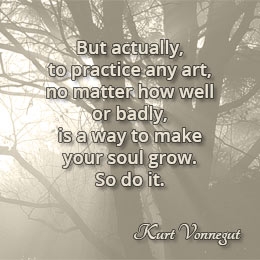Practice
The Structure of a Practice Session
On these pages we seek to provide the vocalist, or anybody who wants to improve their vocal abilities through practice with information about the exercising process, and the steps necessary to keep the voice healthy.
A practice session should include a warm up, one or more phases of singing, rests, and a phase for cooling down. The length of a practice session depends on the vocal ability and fitness of the singer. The anatomy and the organs play a considerable role, just like one would train muscles while following a sportive activity. A beginner therefore would practise for about 20 minutes a day, and then gradually increase the exercising times. An advanced singer would split his practice blocks into 15-20 minute long time slots.
A typical practice session may look like this
Warm-up exercises are used to prepare the voice for singing, or more specific the anatomy of the singer. A good vocal warm-up should accomplish to physically warm up the whole body, to prepare breathing, articulators and resonators, to move from the spoken register to the singing register, and to prepare for the material which the vocalist is going to rehearse or perform. Warm-ups are done in a medium soft volume and take up to 20 minutes depending on your personal recovery cycle and fatigue. Warm-up exercises also can be used to improve upon the vocal abilities with training the anatomy by developing the involved muscles. Find practical examples at warm up exercises.
Vocalisation may include any activity which makes use of the vocal chords, like speaking, making vocal sounds, and singing. During the vocalisation phase the singer tries to avoid to push his or her range, meaning to not include very low or very high notes or pitches that feel uncomfortable to the vocalist.
As is to expect a rest means to refrain from singing or otherwise using the vocal chords for at least a few minutes. Rests are important for a singers' health and will avoid vocal strains, huskiness, and sore throat. Oftentimes professional singers use the rest phases to review and learn lyrics and music, study techniques, observe recorded performances and otherwise utilising the time.
Repertoire and Advanced Repertoire
When we speak of Repertoire in regards to practice or exercising, we do not refer to the body of songs a performer is prepared to perform. We think in terms of skillset and capabilities. For that reason repertoire includes songs which the singer will master easily or effortless, while advanced repertoire refers to songs which make use of advanced vocal techniques or difficulty.
A cool down is used at the end of practice to avoid vocal fatique and huskiness, and with it to increase overall health of the voice. The vocalist uses exercises similar to the warm-up to decrease the blood in the vessels of the muscles and organs used when singing. This process usually takes about 5-10 minutes until the singer reaches normal speaking conditions.














